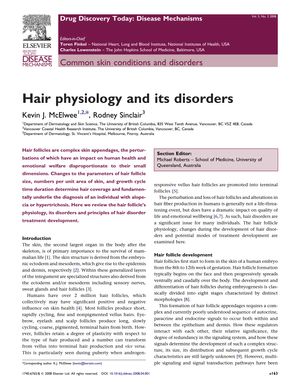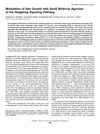Hair Physiology and Its Disorders
May 2008
in “
Drug Discovery Today: Disease Mechanisms
”
anagen catagen telogen exogen hair follicles atrichia Marie Unna hypotrichosis telogen effluvium cicatricial alopecia androgenetic alopecia alopecia areata hair follicle density immune system interference drug therapies hair follicle replication transplantation cell-based therapies genetic manipulation hair growth cycles hair loss hair thinning hair transplant genetic hair loss immune-related hair loss

TLDR Different hair growth problems are caused by genetic issues or changes in hair growth cycles, and new treatments are being developed.
The 2008 document reviews the complex structure and growth cycles of hair follicles, including the anagen, catagen, telogen, and exogen phases, and how deviations in these cycles and follicle characteristics can lead to hair disorders. It discusses congenital disorders like atrichia and Marie Unna hypotrichosis, which are genetic and prevent hair follicles from entering new growth cycles, as well as acquired disorders such as telogen effluvium, cicatricial alopecia, androgenetic alopecia, and alopecia areata, which involve changes in hair growth cycle parameters, hair follicle density, and immune system interference. Treatments focus on modulating hair follicle density, size, and growth cycle, with potential strategies including drug therapies, hair follicle replication, transplantation, and emerging cell-based therapies and genetic manipulation. Despite the significant commercial potential, the pharmaceutical industry has not heavily invested in this area due to the complexity of hair follicle biology, but biotech companies led by academic scientists are exploring new treatments. Research in this field is supported by various foundations and research councils.



















